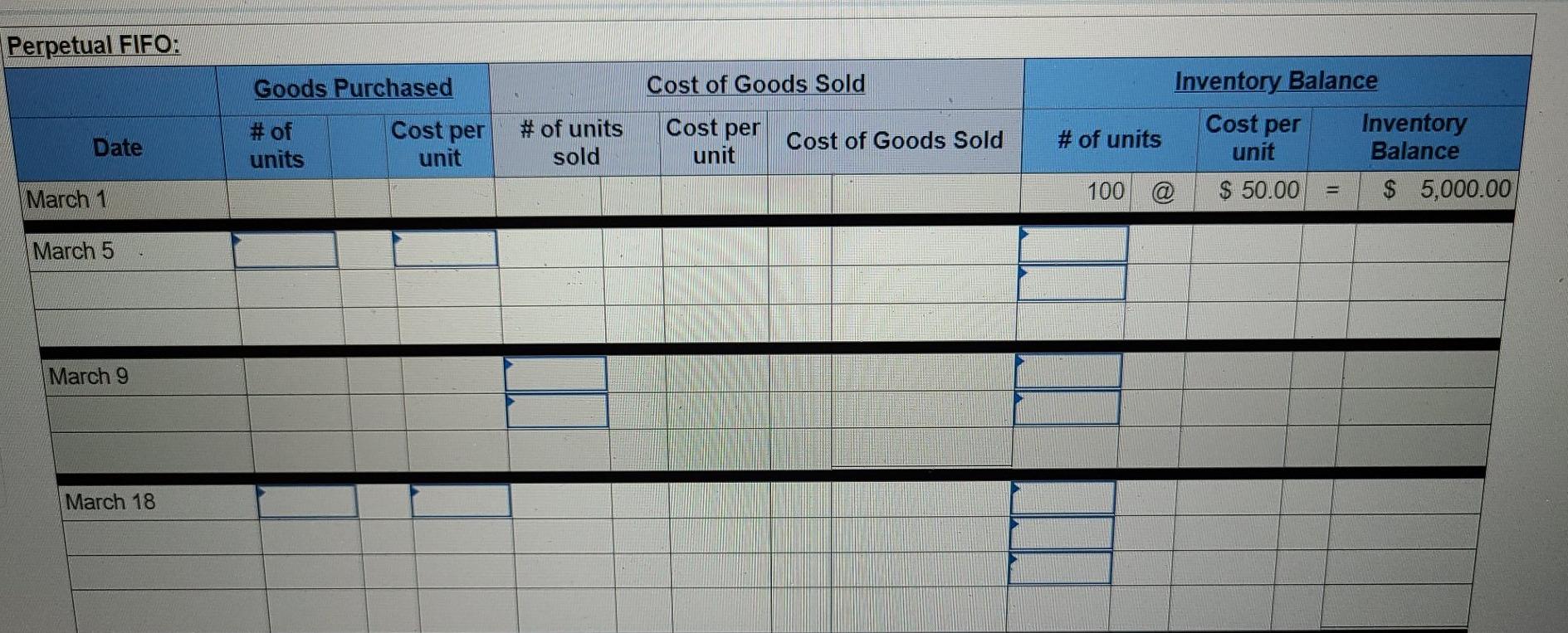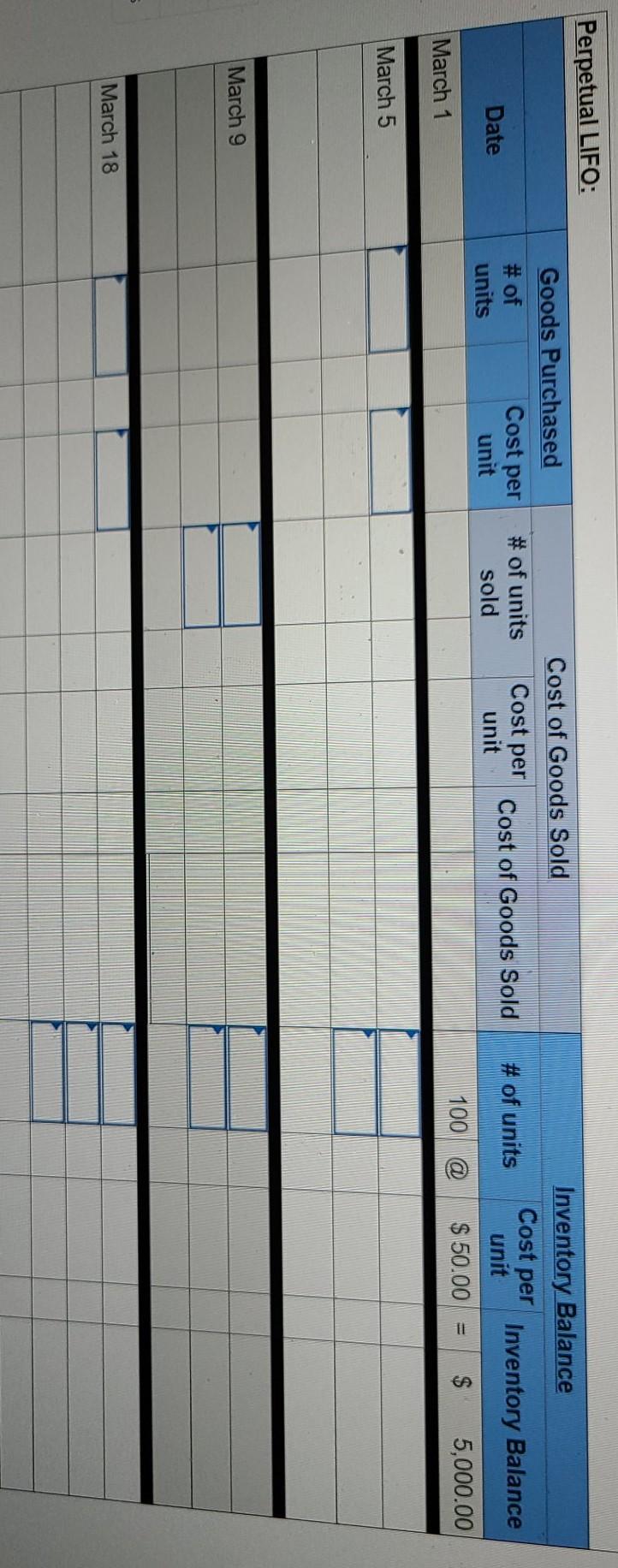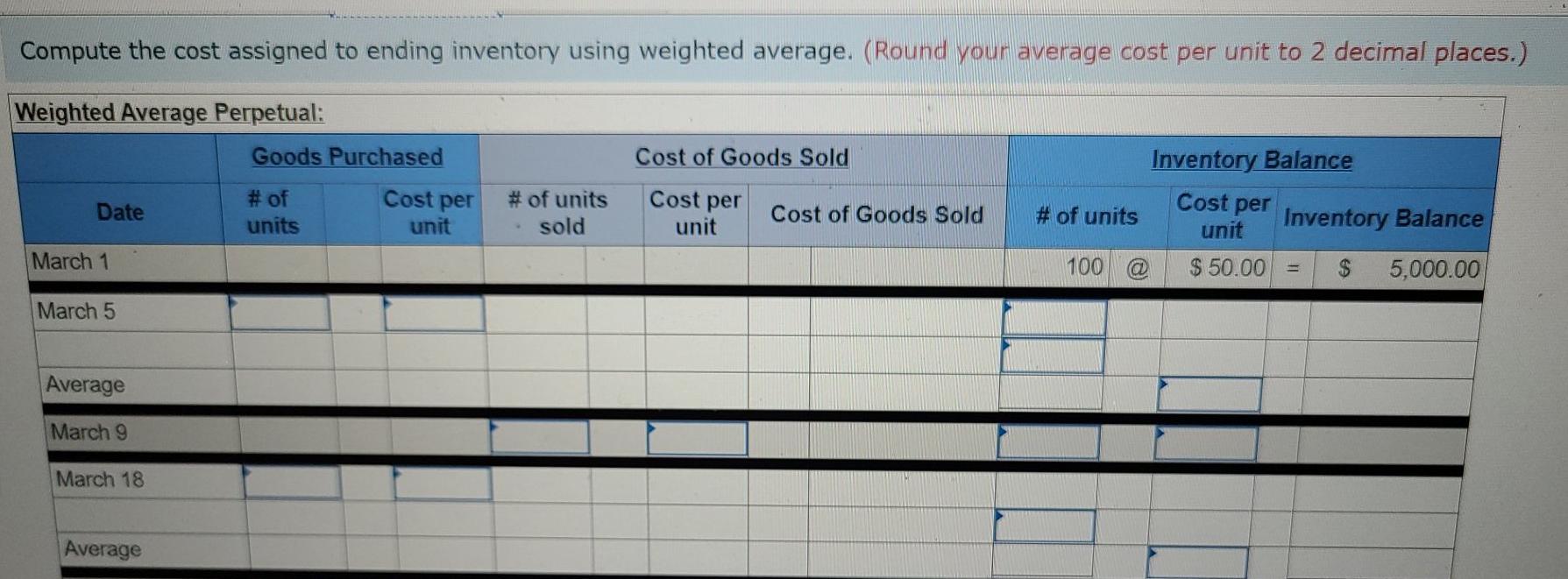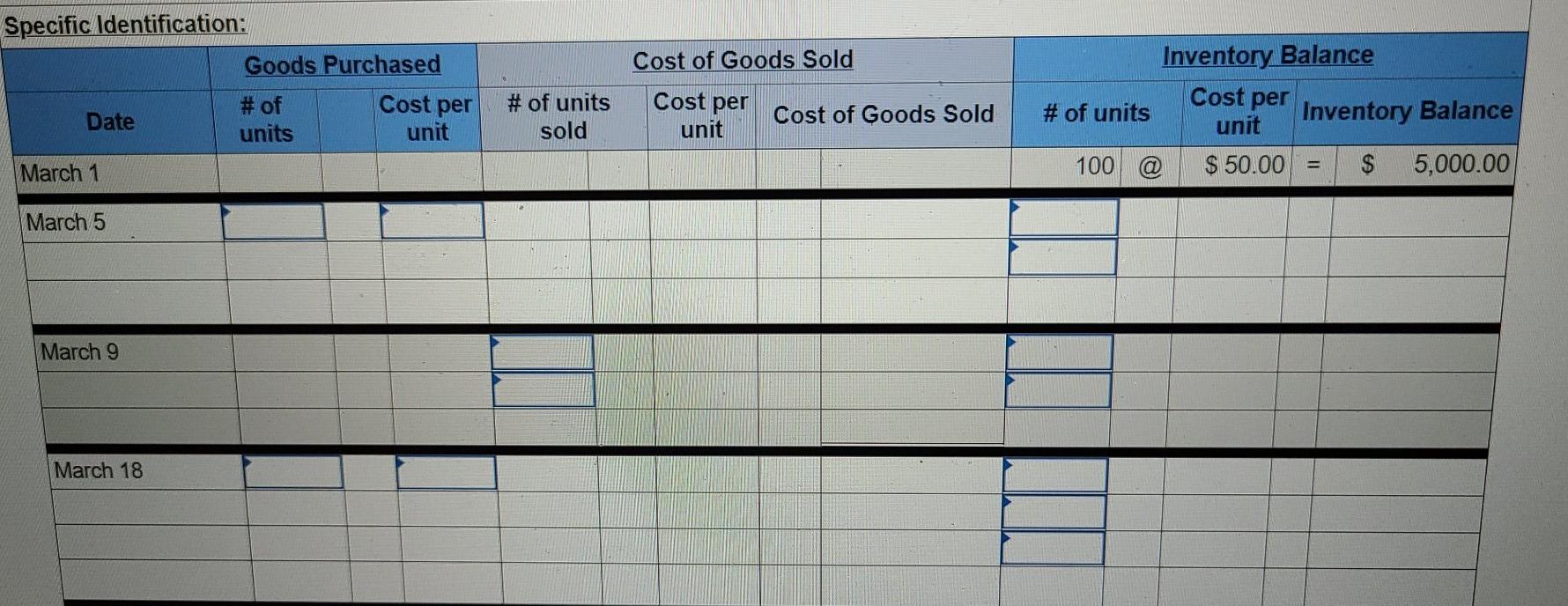Answered step by step
Verified Expert Solution
Question
1 Approved Answer
Please only fill in empty blue boxes. Thank you. please make sure answer is visible Warnerwoods Company uses a perpetual inventory system. It entered into
Please only fill in empty blue boxes. Thank you.













please make sure answer is visible
Warnerwoods Company uses a perpetual inventory system. It entered into the following purchases and sales transactions for March. Units Sold at Retail Units Acquired at Cost 1ee units @ $50.00 per unit 400 units @ $55.00 per unit 420 units @ $85.00 per unit Date Activities Mar. 1 Beginning inventory Mar. 5 Purchase Mar. 9 Sales Mar. 18 Purchase Mar 25 Purchase Mar. 29 Sales Totals 120 units @ $60.00 per unit 200 units @ $62.00 per unit $95.00 per unit 160 units 580 units 820 units 3. Compute the cost assigned to ending inventory using (a) FIFO, (b) LIFO, (c) weighted average, and (d) specific identification. For specific identification, the March 9 sale consisted of 80 units from beginning inventory and 340 units from the March 5 purchase, the March 29 sale consisted of 40 units from the March 18 purchase and 120 units from the March 25 purchase. Complete this question by entering your answers in the tabs below. Perpetual FIFO Perpetual LIFO Weighted Average Specific Id Compute the cost assigned to ending inventory using FIFO. Perpetual FIFO: Goods Purchased Cost of Goods Sold Cost per # of units Date Cost per unit # of units sold Cost per unit Inventory Balance Inventory unit Balance $ 50.00 $ 5,000.00 Cost of Goods Sold of units 100 a March 1 March 5 March 9 March 18 March 25 March 29 Totals 0.00 0.00 Perpetual LIFO: Cost of Goods Sold Goods Purchased # of units unit Cost per Cost per # of units sold Cost of Goods Sold Inventory Balance # of units Cost per Inventory Balance unit 100 @ $ 50.00 5,000.00 Date unit $ March 1 March 5 March 9 March 18 March 25 March 29 Totals $ 0.00 Compute the cost assigned to ending inventory using weighted average. (Round your average cost per unit to 2 decimal places.) Weighted Average Perpetual: Goods Purchased Cost of Goods Sold Inventory Balance Cost per Cost per # of units Date # of units sold Cost per Cost of Goods Sold unit unit # of units unit Inventory Balance March 1 100 @ $ 50.00 = $ 5,000.00 March 5 Average March 9 March 18 Average March 25 March 29 Totals S 0.00 Compute the cost assigned to ending inventory using specific identification. For specific identification, the March 9 sale consisted of 80 units and 340 units from the March 5 purchase; the March 29 sale consisted of 40 units from the March 18 purchase and 120 units from the Marc tion. For specific identification, the March 9 sale consisted of 80 units from beginning inventory of 40 units from the March 18 purchase and 120 units from the March 25 purchase. Cost of Goods Sold Specific Identification: Goods Purchased # of Date units unit Cost per Cost per # of units sold Cost of Goods Sold Inventory Balance Cost per # of units unit Inventory Balance 100 @ $ 50.00 = $ 5,000.00 unit March 1 March 5 March 9 March 18 March 25 March 29 Totals $ 0.00Step by Step Solution
There are 3 Steps involved in it
Step: 1

Get Instant Access to Expert-Tailored Solutions
See step-by-step solutions with expert insights and AI powered tools for academic success
Step: 2

Step: 3

Ace Your Homework with AI
Get the answers you need in no time with our AI-driven, step-by-step assistance
Get Started


